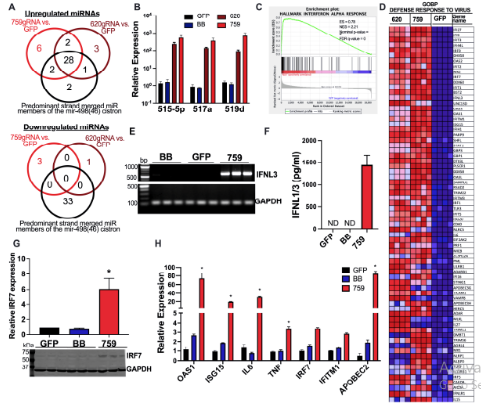Competitive Advantages
- Predict susceptibility for infection or severity of infection in pregnant women
- Reduced viral infections during pregnancy
- Protection of both maternal and fetal health against infections
- Uses the placenta at the maternal-fetal interfaces for antiviral response
Summary
Viral infections during pregnancy have often caused devastating effects on preganancy outcome, fetal development, and maternal health. Since the defense against pathogens during pregnancy conflicts with the tolerance to the allogenic fetus, the placenta at the maternal-fetal interfaceshas developed a unique antiviral defense mechanisms. Unlike somatic cells which require antiviral signals to mediate interferon (IFN) induction, human synctiotrophoblasts constitutively produce type III IFNs, even in the absence of a viral infection, by unkown mechanisms.
Our researchers investigated the protective role of Alu retrotransposons (RTs), which are constitutively transcribed with mir-498(46) cistron (known as C19MC) in the placenta, against viral infections during pregnancy. The inventors have developed a novel method of predicting the susceptibility or severity for viral infection during perganancy by measuring and monitoring Alus. The inventors showed that transcriptional activation of miR-498(46) cistron increases Alu dsRNA that mediates the intrinsic type III IFNs production and antiviral protection and thus can be used as a therapeutic intervention.

Transcriptional activation of the mir-498(46) cistron induced a strong type III IFNs response which provides antiviral protection.
Desired Partnerships
- License
- Sponsored Research
- Co-Development